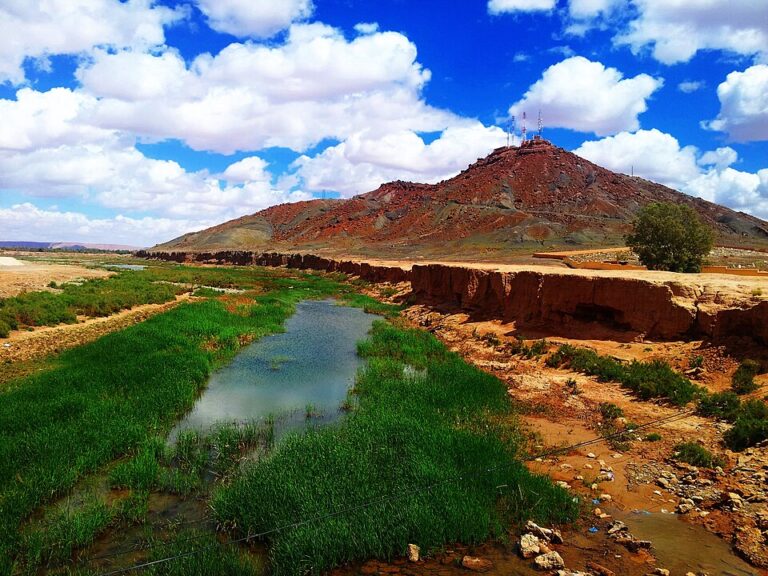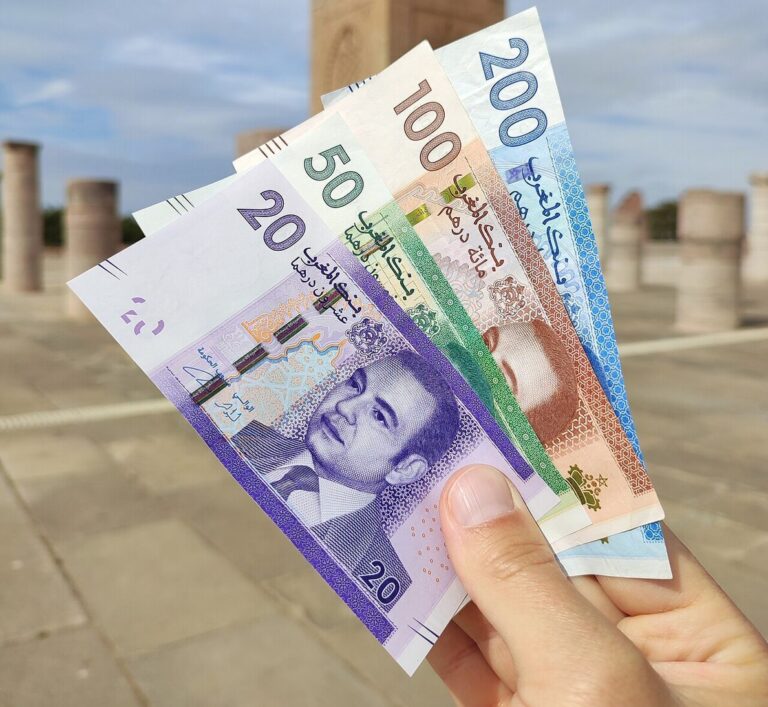
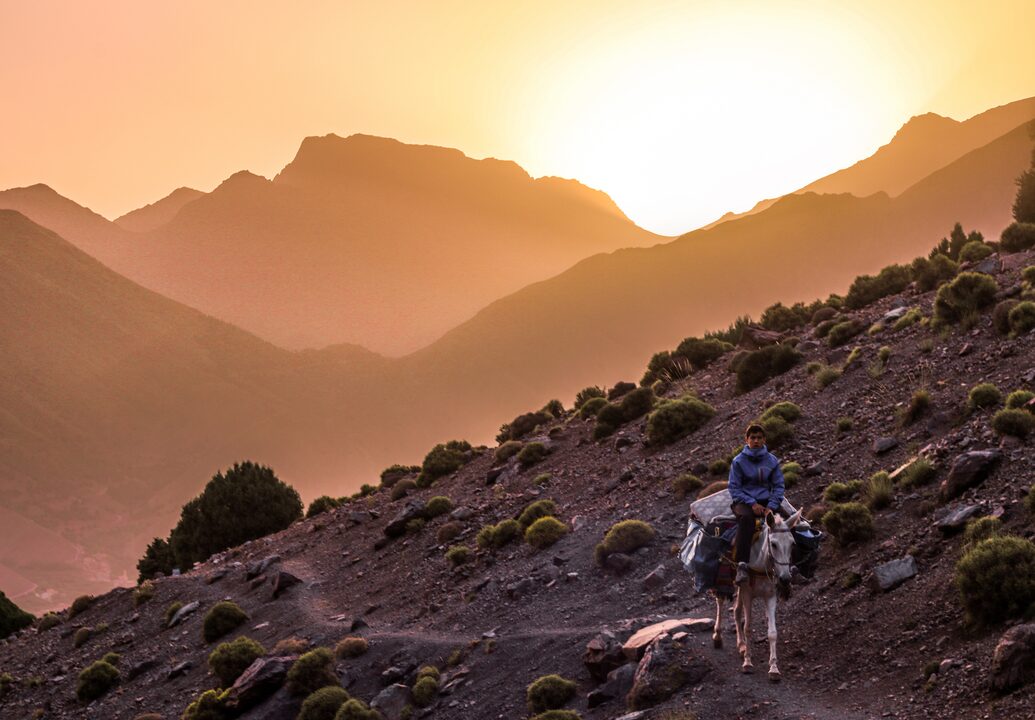
If Morocco calls to your adventurous side, there’s no better place to answer that call than Toubkal National Park. Known for its soaring peaks, timeless Berber villages, and spectacular hiking routes, this national park is a hidden gem tucked into the High Atlas Mountains just south of Marrakech.
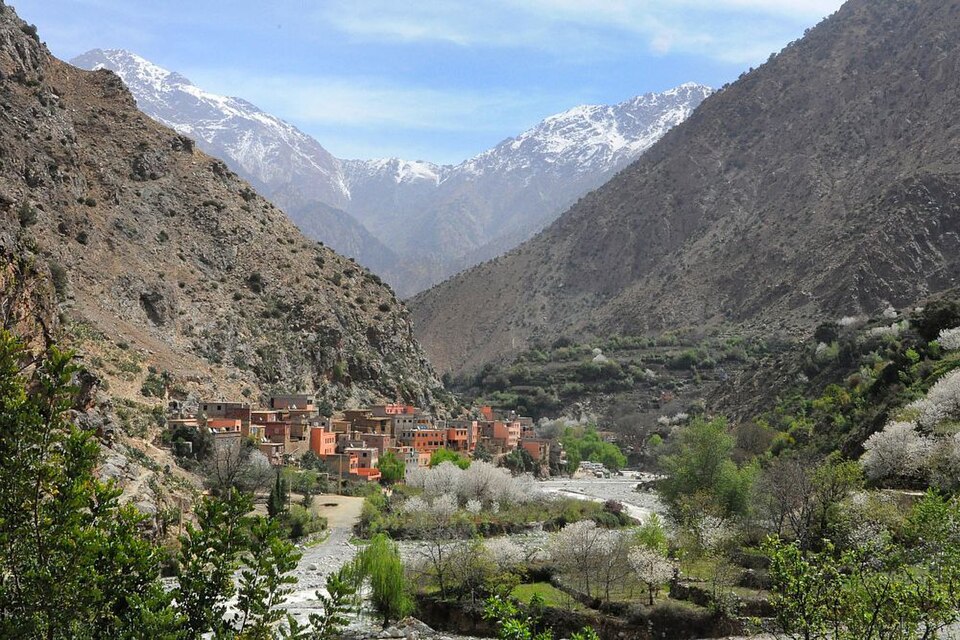
Toubkal National Park isn’t just a destination; it’s an experience that immerses you in Moroccan nature, culture, and spiritual serenity. From challenging climbs to peaceful valleys, it offers a window into the soul of the country — one shaped by rugged landscapes and centuries-old traditions.
Whether you’re looking to summit North Africa’s highest peak or wander through scenic trails with a mint tea in hand, this guide will help you plan a journey into one of Morocco’s most iconic landscapes.
What is Toubkal National Park?
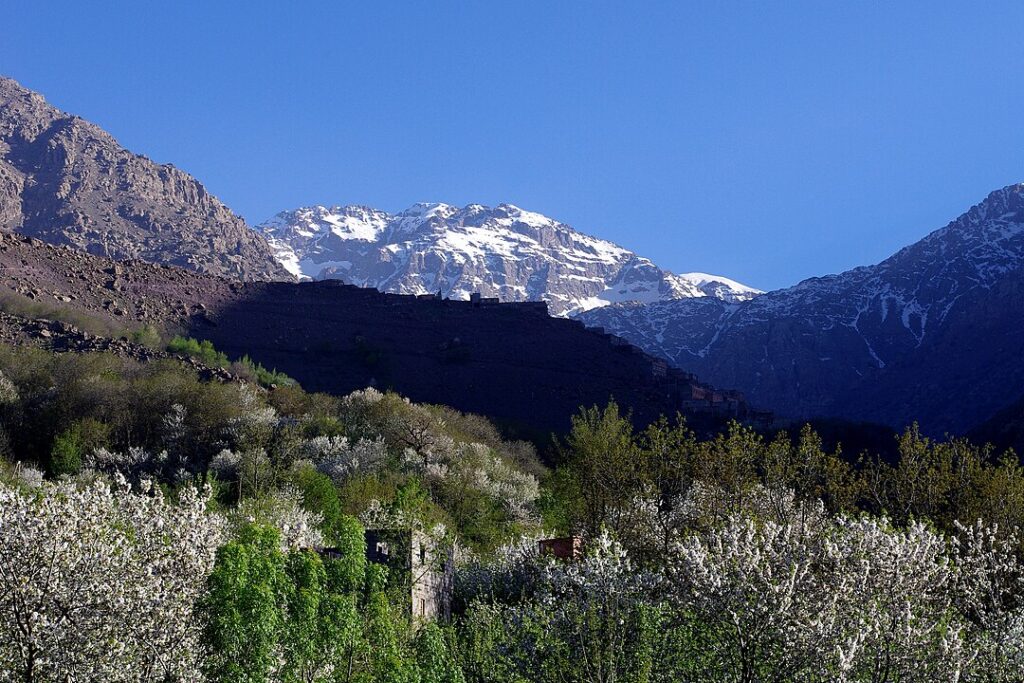
Established in 1942, Toubkal National Park covers more than 380 square kilometers in Morocco’s High Atlas region. At its heart lies Jebel Toubkal, the tallest mountain in North Africa, standing at 4,167 meters (13,671 feet). This dramatic centerpiece draws mountaineers from around the globe, but the park’s appeal goes far beyond one peak.
The park’s landscape is a blend of sharp ridges, alpine meadows, juniper forests, and deep river gorges. As you hike or drive through, you’ll pass Berber villages that seem frozen in time, their stone houses clinging to mountainsides.
The local Amazigh (Berber) people have lived here for centuries, and the area remains a stronghold of traditional Moroccan mountain culture. Expect to be welcomed with warmth, mint tea, and incredible stories — even if there’s no common language spoken.
Fast Facts:
- Location: Al Haouz Province, High Atlas Mountains
- Distance from Marrakech: ~70 km (~2 hours by car)
- Highest point: Jebel Toubkal (4,167 meters)
- Best time to visit: April–October (or winter for snow lovers)
Top Things to Do in Toubkal National Park
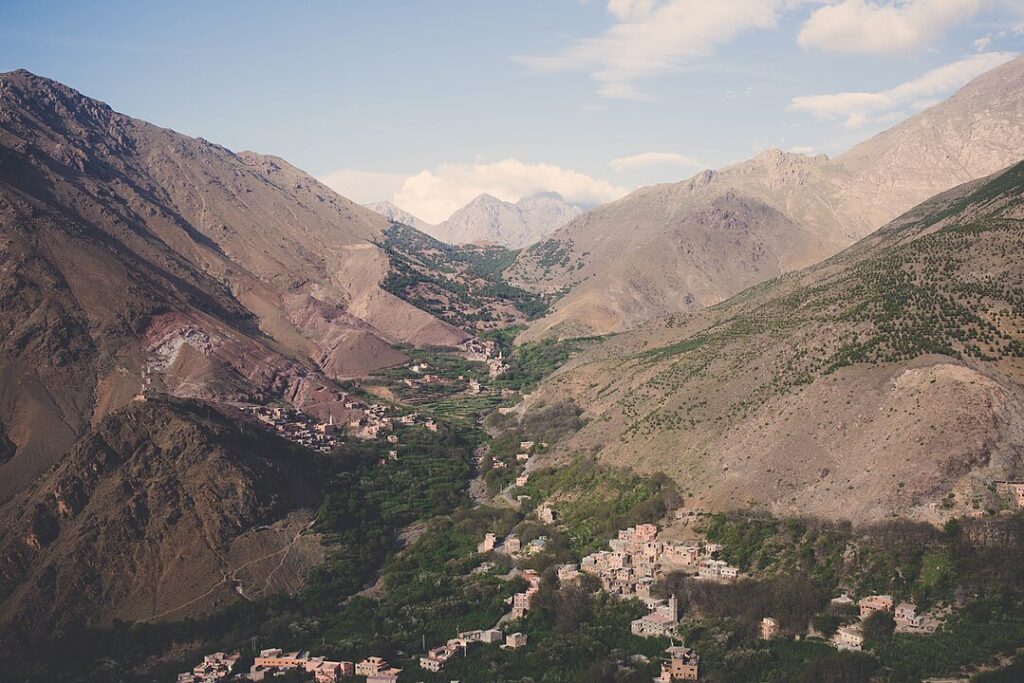
1. Hike to the Summit of Jebel Toubkal
The crown jewel of the park is undoubtedly Jebel Toubkal. While the climb doesn’t require technical climbing skills, it does demand physical endurance, especially due to the altitude.
Most treks begin from Imlil, a picturesque village that serves as a base for hikers. From here, a typical summit trip takes 2–3 days, with a stay at the Refuge du Toubkal (base camp) overnight.
Summiting at sunrise is a once-in-a-lifetime moment: imagine standing above the clouds as the early light spreads over the Atlas and even out toward the Sahara Desert. The views — and the sense of achievement — are unforgettable.
2. Explore the Village of Imlil
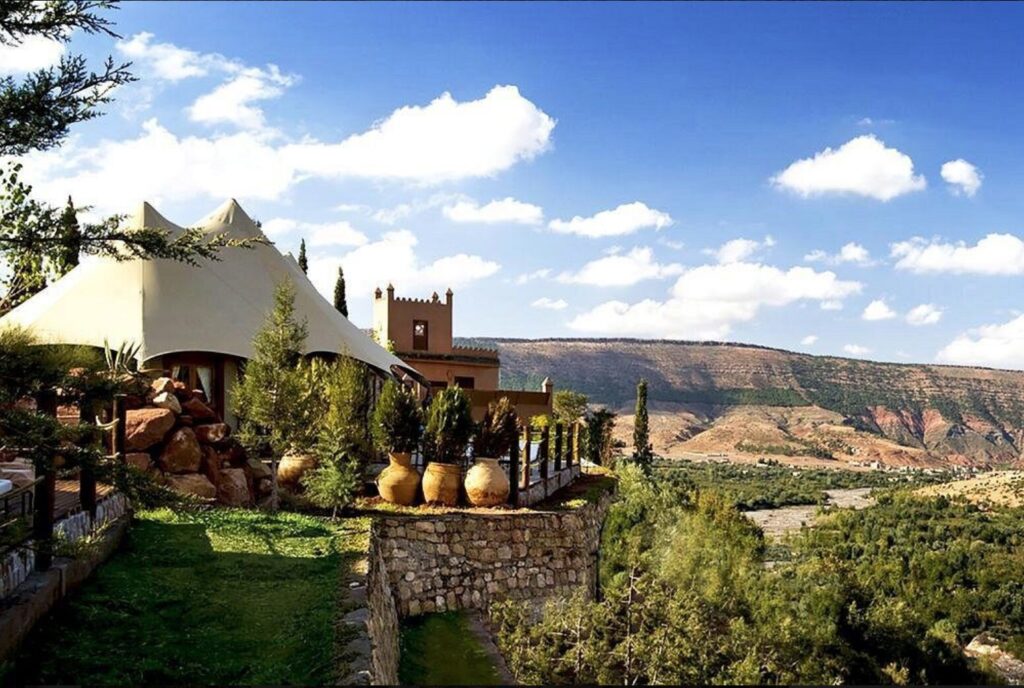
Even if you’re not hiking, Imlil is worth a visit. Perched at 1,740 meters, it’s surrounded by apple orchards, walnut groves, and snow-capped peaks. It’s the ideal spot to relax, explore on foot, and soak up authentic village life.
Local guesthouses (many run by Berber families) offer not only cozy stays but also hearty mountain meals — expect warm bread, lamb tagines, and fresh mint tea.
3. Visit Sidi Chamharouch
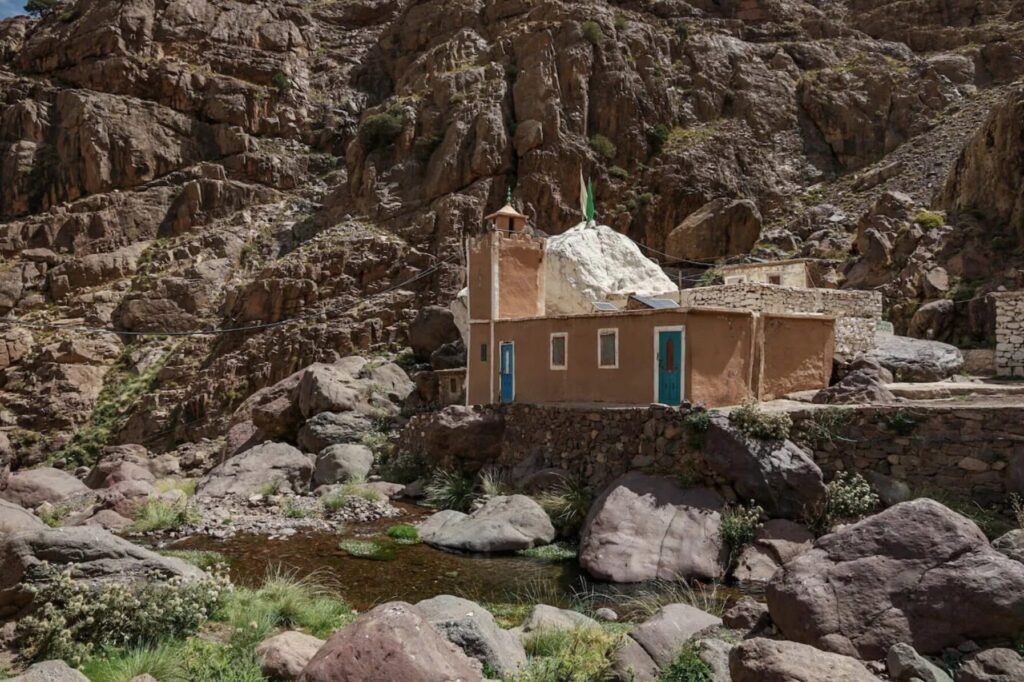
A fascinating stop along the Toubkal route is Sidi Chamharouch, a small pilgrimage site built around a white-painted rock believed to have spiritual powers. Pilgrims and hikers alike stop here to rest, snack, and admire the waterfall nearby.
It’s a unique blend of cultural and natural interest — part legend, part oasis.
4. Walk Through the Aït Mizane Valley
This lush valley is a peaceful alternative to the more challenging summit treks. It’s lined with terraced fields, fruit trees, and stone-built Berber homes. If you’re lucky, you might spot grazing goats or hear the distant call to prayer echoing through the hills.
Spring is particularly magical here, with wildflowers blooming under the snowy peaks.
Travel Tips and Local Insights
How to Get There
From Marrakech, you can reach Imlil by:
- Private taxi or driver (approx. 2 hours, most convenient)
- Shared taxi to Asni, then onward taxi to Imlil (cheaper but slower)
- Tours and trekking companies that include transfers
Language & Communication
Berber and Moroccan Arabic are the primary languages spoken. French is common in tourist areas, and English is increasingly used by guides and guesthouse owners.
Packing Essentials
- Good hiking boots
- Warm clothing (even in summer, nights are cold)
- Sunscreen, hat, and sunglasses
- Daypack with water and snacks
- Camera or phone for epic photos
Cultural Etiquette
- Dress modestly, especially in villages (shoulders and knees covered)
- Always greet locals with “Salam Alaikum”
- Ask before photographing people
- Accept tea — it’s a gesture of hospitality
Real-Life Stories from the Trails
Anna & Luke from the UK: The Joy of Slow Travel
“We came to Toubkal National Park to hike, but what stuck with us were the people. We were invited into a local home for couscous and tea after walking through Aroumd. There was no rush — just a quiet sense of peace and community. It changed how we think about travel.”
Karim, a Local Guide from Imlil
“Every season, I meet people from around the world. Some come for the summit, some for the silence. But they all leave saying the same thing — that Morocco surprised them. This mountain gives people perspective.”
Best Times to Visit & Seasonal Highlights
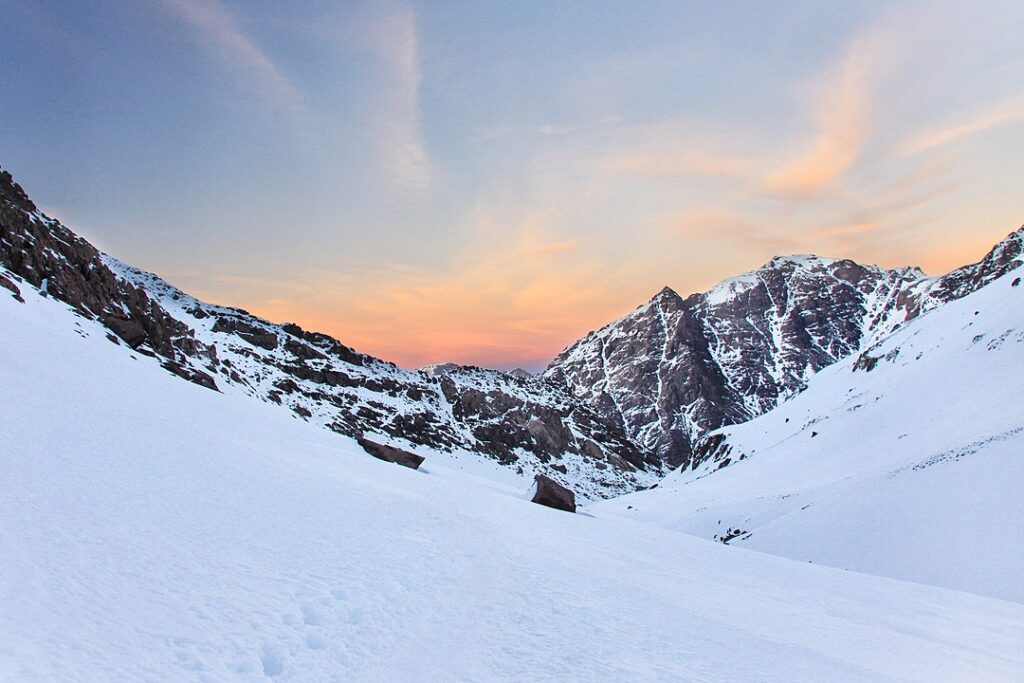
Spring (March–May):
Trails are open, valleys bloom, temperatures are mild. Ideal for all types of hikers.
Summer (June–August):
Warm days and cool nights at higher elevations. The best time for summit climbs. Be prepared for crowds.
Autumn (September–November):
Cool, dry weather with fewer tourists. Ideal for photography and village visits.
Winter (December–February):
The park is snow-covered and suitable for alpine trekking and ski touring. Only recommended for experienced climbers with winter gear.
FAQ – All About Toubkal National Park
Is Toubkal National Park suitable for beginners?
Yes! While the summit is a challenge, there are many gentle valley hikes and cultural tours that are beginner-friendly.
Do I need a guide to hike in the park?
Since 2019, guided treks are required for climbs above a certain elevation, including Jebel Toubkal. Hiring a local guide also supports the community.
Can I visit Toubkal National Park in a day?
You can visit Imlil and take short walks or enjoy lunch with mountain views. However, for full trekking experiences, plan a multi-day trip.
What kind of accommodations are available?
You’ll find mountain lodges, guesthouses, and basic refuges. Most are locally run, offering authentic meals and cozy hospitality.
Is there Wi-Fi or mobile signal in the park?
Some lodges in Imlil have Wi-Fi. Mobile coverage is spotty in remote areas, especially at higher elevations.
Conclusion: The Mountains Are Calling
A journey to Toubkal National Park is more than a vacation — it’s a reconnection with nature, simplicity, and a timeless way of life. Whether you’re hiking through cloud-kissed peaks or sharing tea with a Berber family, this slice of Morocco will leave an imprint on your soul.
Ready to plan your mountain escape?
Check out more destination guides on Skies of Morocco, connect with local guides, or start building your dream trek today. The High Atlas is waiting, and the adventure begins now.



